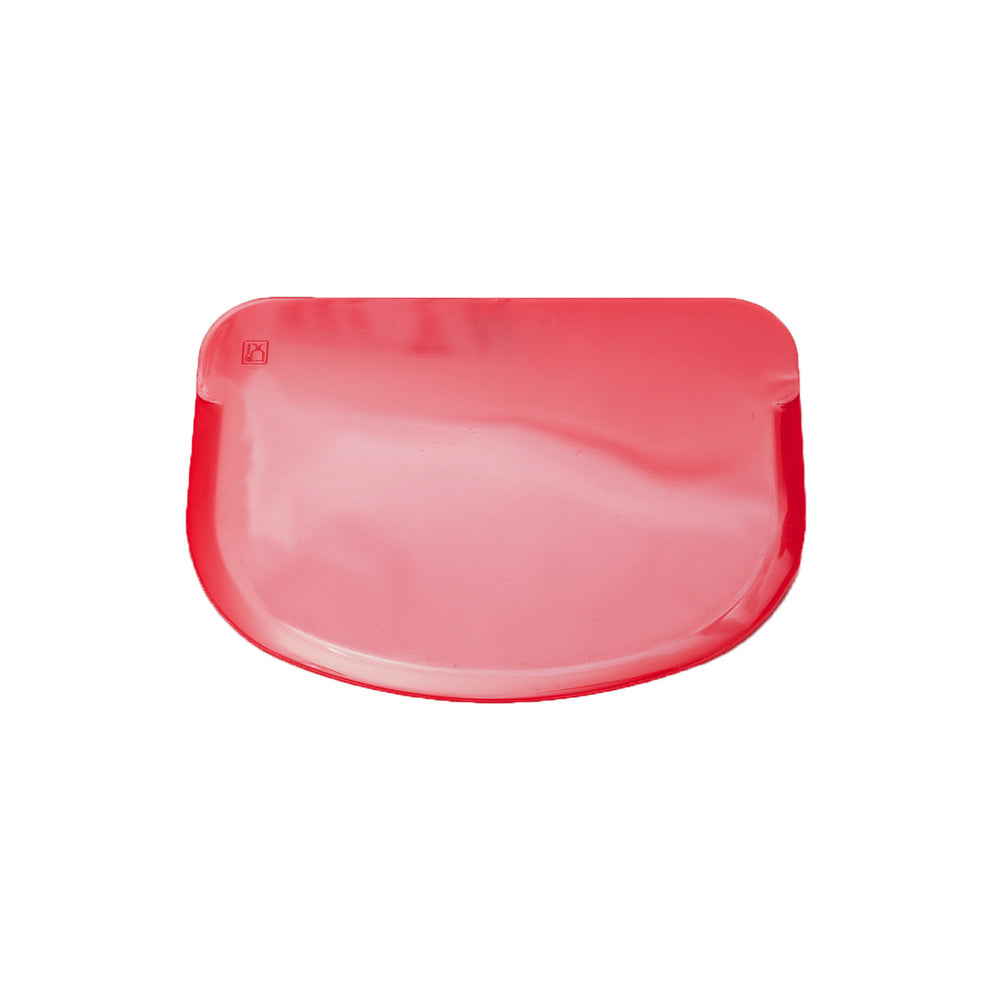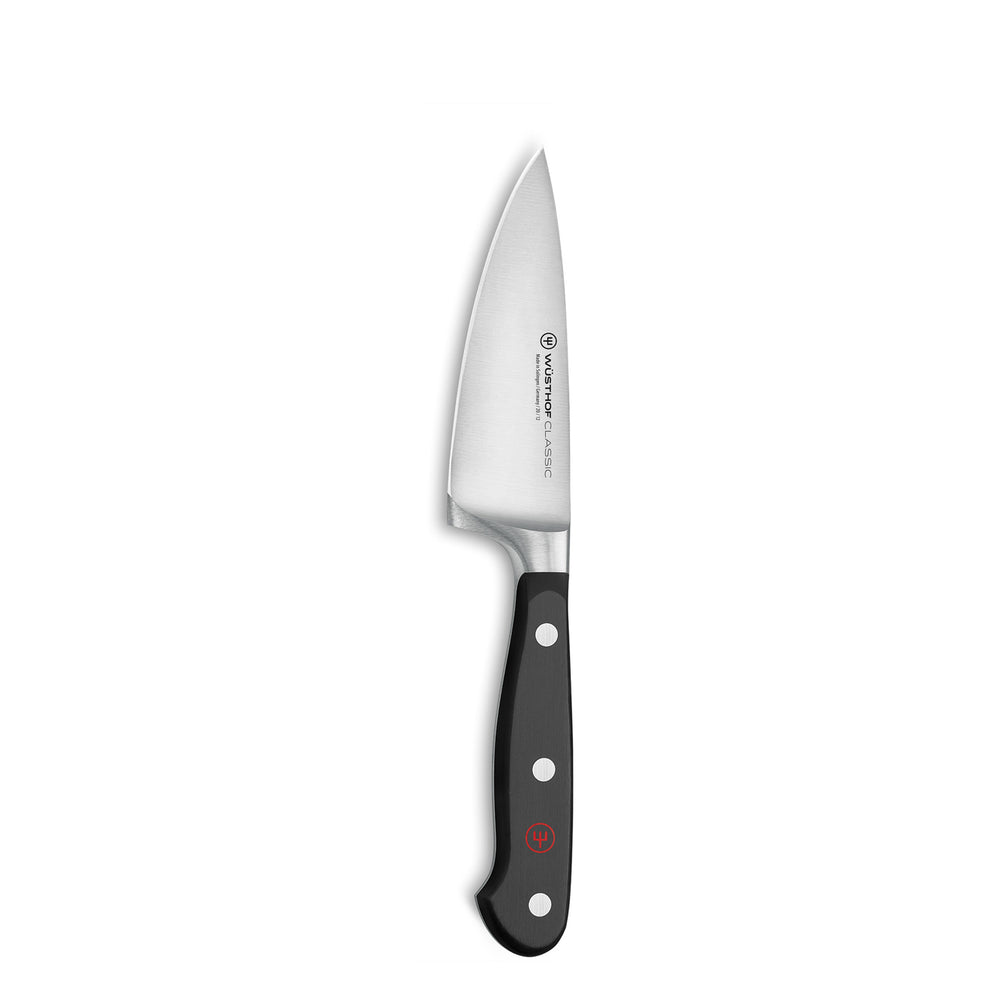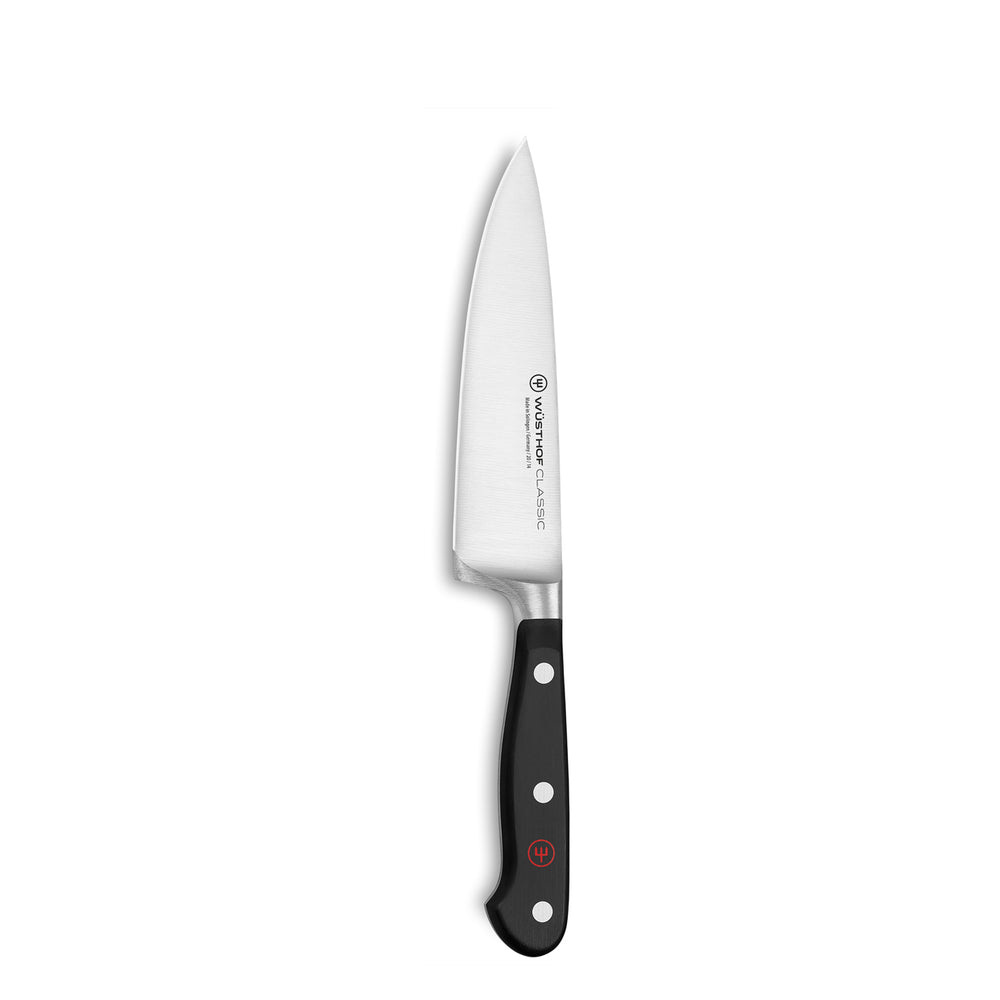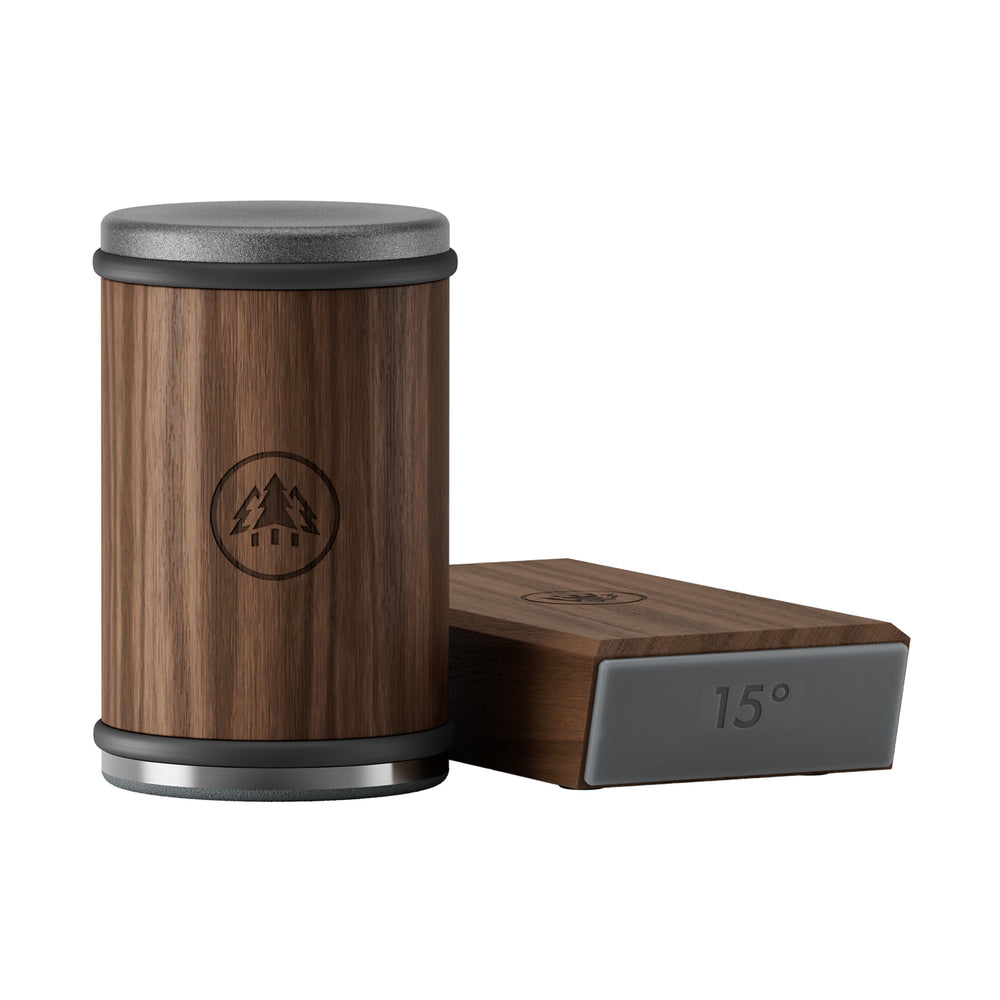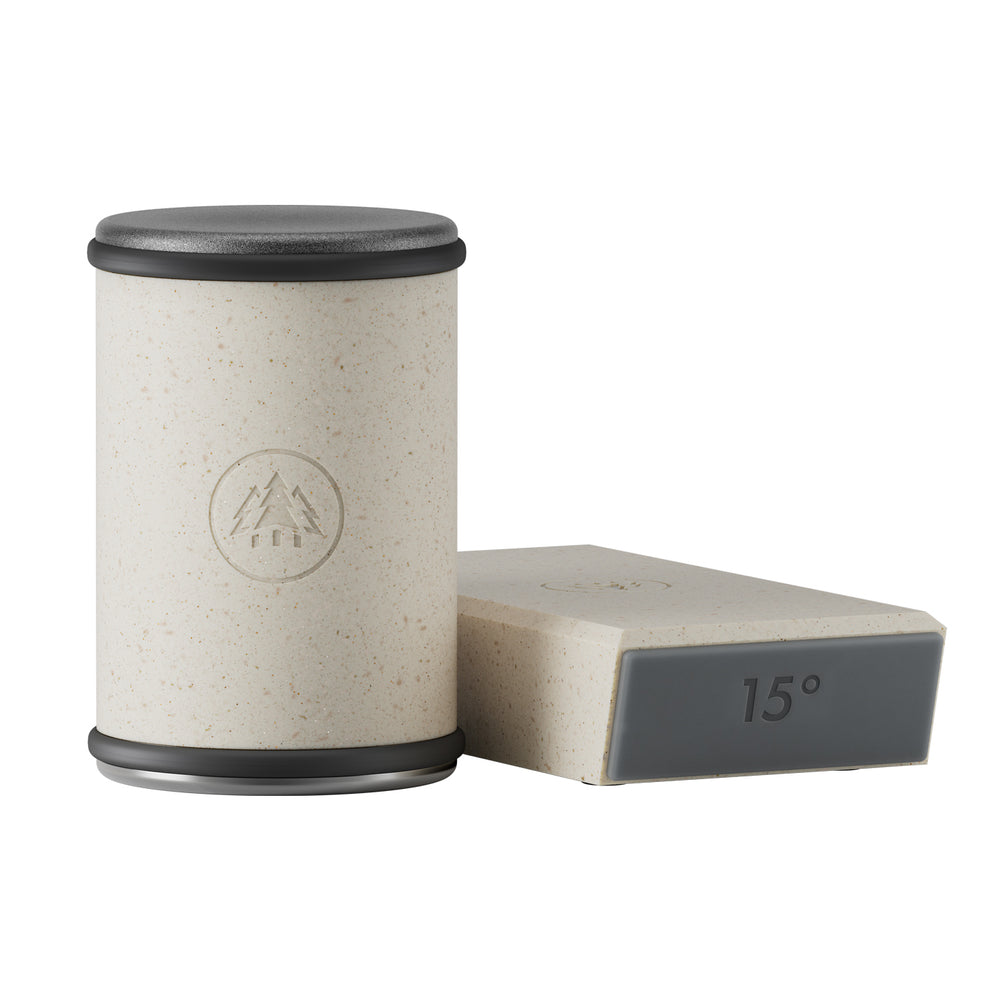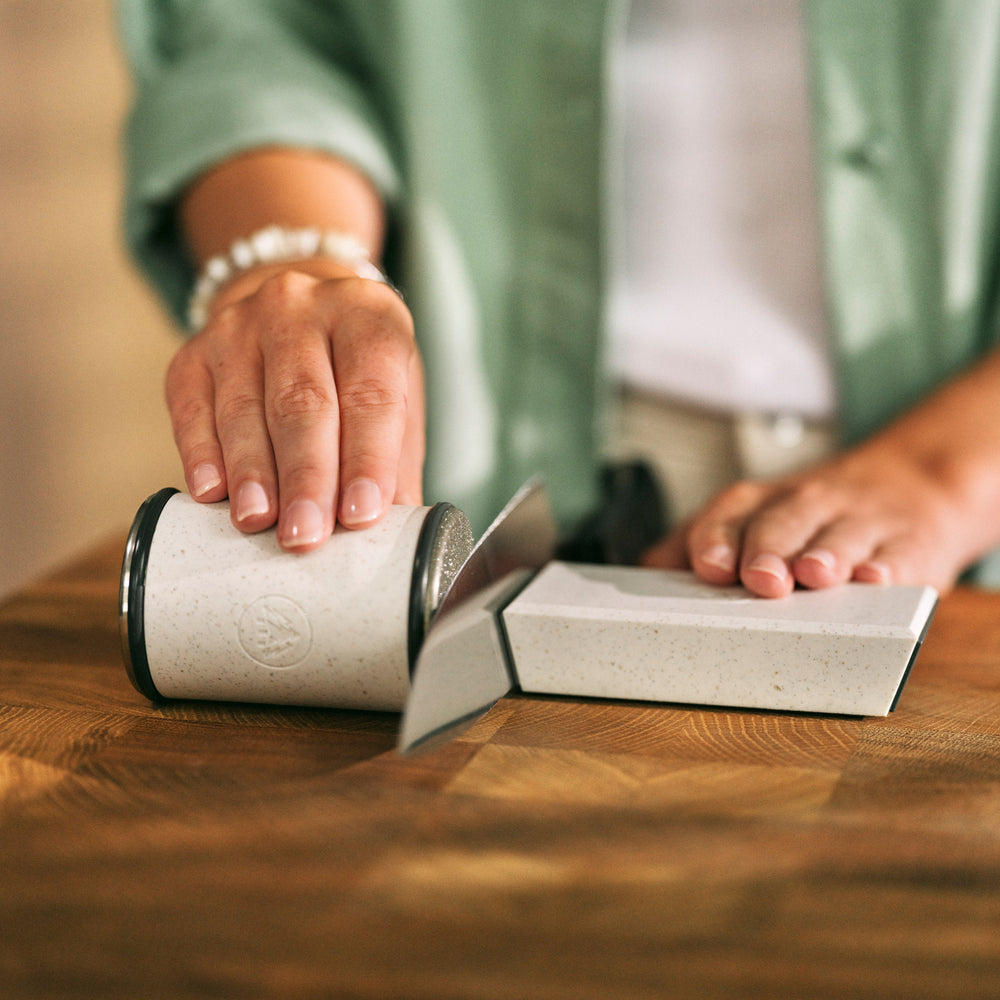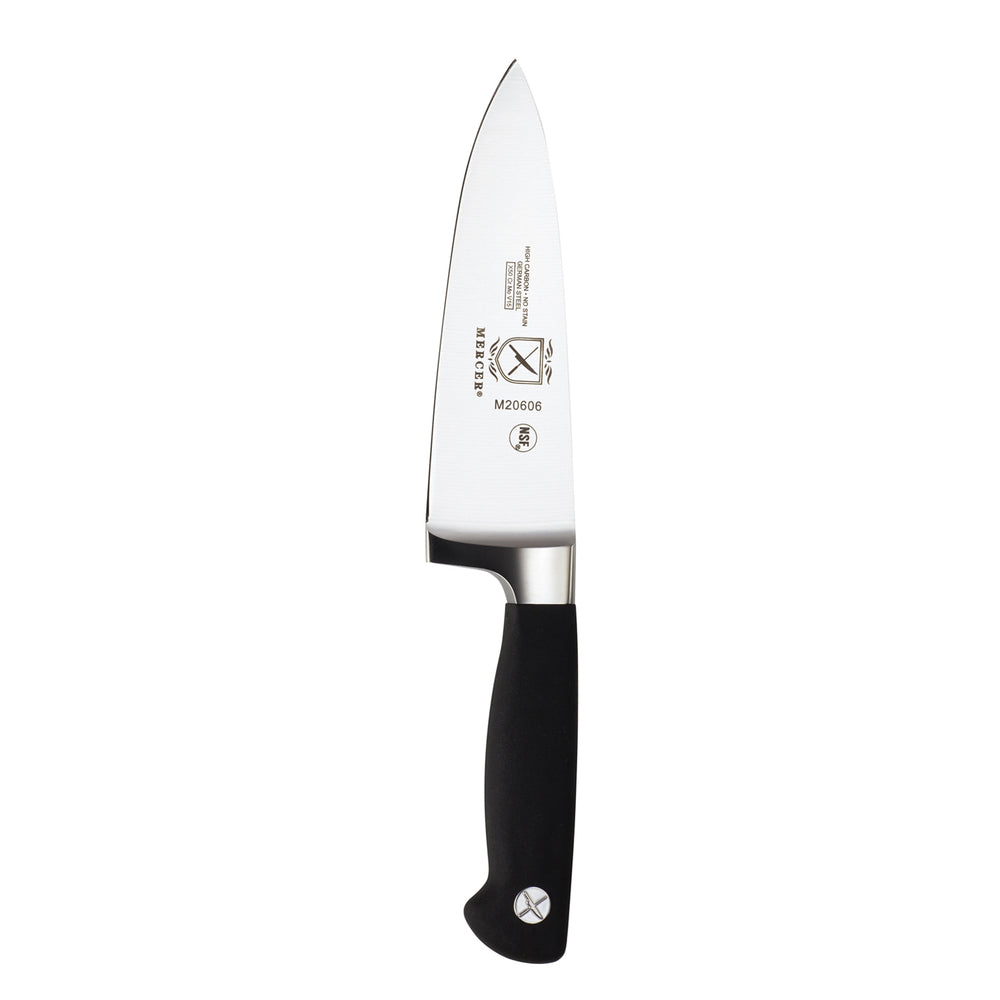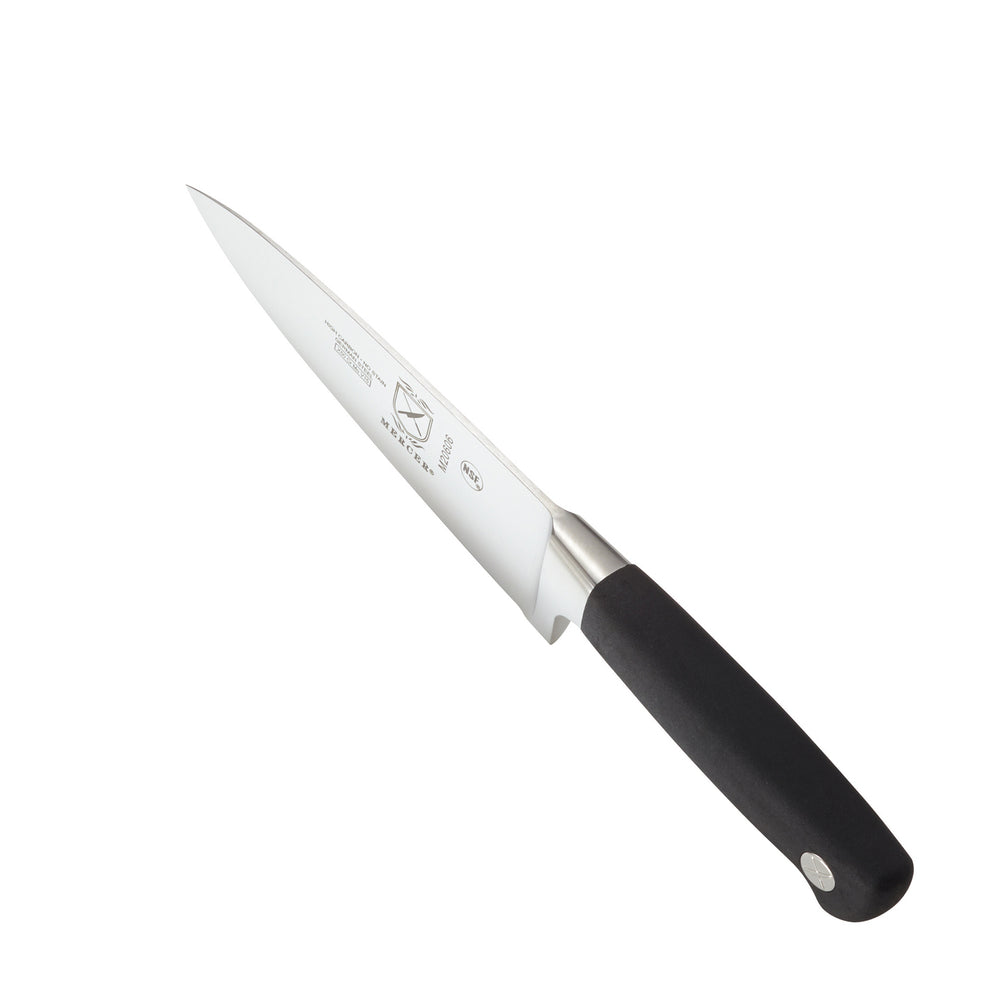A sharp, well-maintained
chef’s knife or its Japanese counterpart, the
santoku, is the cornerstone of any kitchen. Memorising a few simple guidelines will ensure that its blade stays sharper for longer, lasting you a good decade of daily use at the very least. While these tips are most important for chef’s knives or santokus, they apply to every knife in your collection.
Do: Hone Blades Regularly, Sharpen Less Often
A sharp knife is safer and far more effective than a dull one. But before you sharpen a knife, it’s worth understanding how the process works – specifically, that knife sharpening is a two-step process.
The first step is
sharpening. This grinds down and removes metal from your blade to give it a new edge. The second step is
honing. This doesn’t remove metal, but realigns the edge to ensure it is straight and effective. You can hone a knife without sharpening it, but you cannot sharpen a knife without honing it – or the knife simply won’t cut. That’s why most
knife sharpeners and whetstones are 'combination' style, meaning they have both sharpening and honing surfaces.
HORL rolling knife sharpeners, for example, have a sharpening stone on one end of its rolling mechanism and a honing stone on the other.
The reason you want to hone more often than you sharpen is that honing does not remove metal from the blade’s edge. The less metal you remove, the longer your knife’s lifespan will be.
To assess whether your knife needs to be sharpened, and how much, slice a tomato. If the tomato squishes under the blade, forming a puddle of juice on your chopping board, it needs sharpening and honing. If the tomato squishes and shows some resistance, but can still be sliced (though not very neatly), just honing will suffice.
Note that serrated knives, like
bread knives, cannot be sharpened or honed.
Do Not: Drip Dry, Soak, or Place Knives in the Dishwasher
Always wash knives by hand with soap and water, then dry them immediately by wiping clean with a
tea towel. This prevents water spots, rust, and other damage to both blade and handle. It is especially important for hard London water, where calcium deposits can form on the blade’s edge, causing it to become brittle and damaged.
Do not let knife blades soak, as the prolonged contact with water dulls their edges. You also want to take extra caution when preparing acidic ingredients like tomatoes, citrus, and onions, as acid could corrode the edge of the blade. Make sure to wash and dry blades immediately after chopping these ingredients. Think of it as one less item to wash up after cooking!
Do: Use the Right Chopping Surface
Every time your knife blade hits a surface, it becomes slightly weaker. That’s why having a
wood or
soft rubber chopping board is ideal – it reduces the impact on the blade.
Wood fibre boards are an excellent choice if you want an alternative to plastic; it is dishwasher-safe and relatively kinder to knife blades.
As a rule of thumb, the harder the surface, the more it will hurt the blade’s edge. So do not be tempted to chop ingredients directly on the counter or plate, as materials like marble, bamboo, glass, and ceramic are very tough on the edge and could damage your knife.
Do Not: Use Bamboo Chopping Boards
Bamboo might look like wood, but it is not – it’s a type of grass. As such, it does not wear down, the way wood does; it splinters, and could splinter onto your ingredients. It is an exceptionally hard material, comparable to steel, glass, or ceramic. Its impact will dull and damage blades, especially the hard blades of
Japanese knives.
Do: Be Careful When Using a Japanese Knife
The key thing to remember when using a Japanese knife is to be careful when chopping ingredients that have bones or hard seeds, whether that’s a cut of meat or an avocado. This also applies to frozen food. You can use Japanese knives for these tasks, but you should be gentle and avoid any hard, sudden impact, or better yet, have a Western knife handy for these purposes.
Do Not: Use a Knife Blade to Move Ingredients
We’ve all done it – use a knife blade as a platform for transferring ingredients from board to pan. But scraping a blade against any surface, including a soft surface like wood, will dull its edge. Instead, keep a
dough scraper handy for the task. It has the added benefit of more surface area, and you can use the same dough scraper to clean away any scrap from your chopping board and kitchen counter. A simple plastic one, like our favourite
red dough scraper from Paderno, is perfect for this task, as it is thin enough to slide under ingredients with ease.
Do: Store Knives Properly
Knives should be stored where the blades won’t rub and clash against other utensils – in a
knife block, on a
magnetic strip, or in a protective sheath, like our
Borough Kitchen Knife Guards. Do not store them in drawers unless their blades are covered. Proper storage prevents unnecessary dulling and potential injuries.
Do Not: Worry Too Much!
Even if a blade chips, it can be sharpened back to good shape by a professional. We offer free annual knife sharpening on any
Kai Shun knife purchased in our shop for 10 years, for customers subscribed to our mailing list. Professional knife sharpening and repair services are also available if you did not purchase knives in our shop, or purchased a non–Kai Shun knife, from £13.00 per knife. Please contact our Customer Service team at
online@boroughkitchen.com to make an enquiry.
If you would like to repair a damaged knife using a HORL 3 rolling knife sharpener, you can do so with the
HORL 3 Diamond Disc / Coarse, an additional attachment that affixes to the roller of a
HORL 3 or
HORL 3 Pro Knife Sharpener. (It is not compatible with the
HORL 3 Cruise.) If doing so, remember to hone your blade after sharpening in order to bring it back to working condition.





